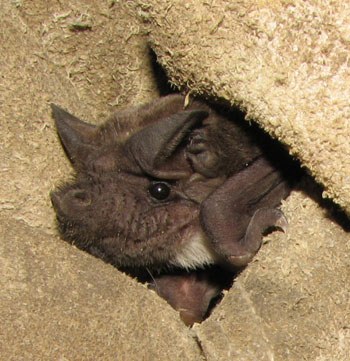Identification pointers
To the untrained eye they closely resemble the Little free-tailed bat with dark charcoal-coloured fur above and a pale white or cream below which may extend more towards the chin than in the Little free-tailed bat. This species is larger in size, however, and the mouth is broader. Also, when in flight the wing membranes may appear lighter in colour. They have wrinkly lips and forwardly ears. Forearm length is between 43-49 mm and their mass may vary from 16-28 g.
Roosting habits
Crevices in rocks and many other crevice-like spaces, but very commonly they are found in high numbers in the roofs of houses or buildings, sharing their roost with the Little free-tailed bat. Large roost aggregations have a musky smell and squeaky sound may be audible throughout most of the day in roosts, but they become exceptionally restless before dusk.
Breeding
Two single young are born per year between September and early May.
Food
They are fast flyers and probably feed on beetles due to their powerful jaws 10; plant-sucking bugs are also a probable part of their diet.






